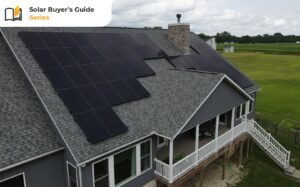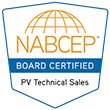 As a homeowner, tapping into the power of the sun presents a brilliant opportunity to harness clean, renewable energy right from your rooftop. But with various types of solar panels for home use on the market, making the right choice can seem daunting. Understanding the differences between these options is crucial to maximizing your investment and reaping the full benefits of solar energy. In this guide, we explain the most common solar panel types, their key features, and how to choose the best option for your energy needs.
As a homeowner, tapping into the power of the sun presents a brilliant opportunity to harness clean, renewable energy right from your rooftop. But with various types of solar panels for home use on the market, making the right choice can seem daunting. Understanding the differences between these options is crucial to maximizing your investment and reaping the full benefits of solar energy. In this guide, we explain the most common solar panel types, their key features, and how to choose the best option for your energy needs.
Types of Solar Panels: Your Options for Energy Savings
Because there are various types of solar panels, each with unique advantages and drawbacks, it’s important to educate yourself before moving into the installation process. Below are the five most common types of solar panels with pros and cons to help you decide.
1. Monocrystalline Solar Panels
Monocrystalline panels remain the most popular choice for homeowners in 2024 and will continue to be as we head into 2025. These panels are made from single-crystal silicon, which gives them a uniform black appearance. Known for their high efficiency and sleek aesthetics, monocrystalline panels convert sunlight to electricity more effectively compared to other types, making them ideal for maximizing output on rooftops with limited space.
Advantages:
- High Efficiency: Typically 20-22%, which means you get more power per square foot.
- Durability: Longer lifespan and good performance in both low-light and high-temperature conditions.
- Aesthetics: Their dark color blends well with many roof styles.
Considerations:
- Cost: Monocrystalline panels are among the most expensive because of the more complex production process.
2. Polycrystalline Solar Panels
Polycrystalline panels are another established option and are slightly less efficient than monocrystalline panels. These are made from multiple silicon crystals, which gives them a blue, speckled appearance. In 2024, polycrystalline panels continue to be a cost-effective solution for homeowners who have ample roof space and want reliable performance at a lower upfront cost.
Advantages:
- Lower Cost: Generally more affordable due to a simpler production process.
- Good Efficiency: Typically 15-18%, which works well for homes with plenty of roof space.
Considerations:
- Less Efficient: They take up more space to produce the same amount of electricity as monocrystalline panels.
- Aesthetics: Their blue hue is less subtle than monocrystalline panels, which some homeowners may not prefer.
3. Thin-Film Solar Panels
Thin-film solar panels are a relatively newer option for residential use. They are made by layering photovoltaic material onto a substrate, which results in a flexible, lightweight panel. While they have traditionally been used for large-scale commercial installations, advancements in technology have made thin-film panels more accessible for homeowners in 2024.
Advantages:
- Flexibility: Can be applied to different surfaces, including curved or irregular roof designs.
- Lightweight: Easier to install and sometimes a good choice for rooftops that can’t support heavy loads.
Considerations:
- Lower Efficiency: Thin-film panels typically range between 10-12% efficiency, meaning they require significantly more space.
- Shorter Lifespan: They tend to degrade more quickly compared to crystalline panels.
4. Bifacial Solar Panels
Bifacial panels are gaining popularity in 2024, especially for homeowners looking to maximize energy output. These panels can absorb sunlight from both sides, which means they generate more electricity compared to traditional single-sided panels. They are often used in ground-mounted installations, but they can also be installed on rooftops with reflective surfaces.
Advantages:
- Increased Energy Output: The ability to capture sunlight from both sides results in higher overall efficiency.
- Durable Design: Bifacial panels often feature a glass-on-glass construction, making them resistant to harsh weather.
Considerations:
- Higher Cost: Slightly more expensive due to their enhanced technology and materials.
- Installation Considerations: Optimal performance requires a reflective or light-colored surface beneath the panel.
5. PERC (Passivated Emitter and Rear Cell) Panels
In 2024, PERC technology has become increasingly common, enhancing the efficiency of traditional monocrystalline and polycrystalline panels. PERC panels include an additional layer that reflects unused light back into the cell, resulting in greater energy capture.
Advantages:
- Higher Efficiency: Increased efficiency without significantly increasing the size or cost compared to standard panels.
- Temperature Performance: PERC panels perform better in higher temperatures compared to standard panels.
Considerations:
- Slightly Higher Cost: Generally more expensive than standard polycrystalline panels but comparable to monocrystalline prices.
What Is the Best Type of Solar Panel?
When choosing the right solar panels for your home, consider factors like your roof size, your budget, and your energy needs:
- Limited Roof Space? Monocrystalline panels might be the best option due to their high efficiency.
- On a Budget? Polycrystalline panels are cost-effective if you have enough space for a larger installation.
- Looking for Flexibility? Thin-film panels may be ideal for unique roof shapes.
- Want To Maximize Output? Bifacial panels are great if you want to boost your energy production with minimal roof space changes.
- Need To Balance Cost and Performance? PERC panels can give you an efficiency boost without a huge cost increase.
Ultimately, choosing between the various types of solar panels is all about finding what fits your unique situation best. If you have questions about your options, connect with an Ecohouse Solar expert today to chat about your solar panel options in central Ohio.
Choosing the Best Solar Panel Solution for Your Home
At Ecohouse Solar, we’re driven by a passion to cut down energy expenses and carbon footprints throughout Ohio. We thrive on working with both homeowners and businesses eager to join us in this mission. Don’t hesitate to get in touch with our knowledgeable solar experts, who are ready to answer your questions about solar panel types and guide you through the process.





 Project Calculator
Project Calculator